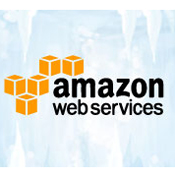Krishan Lal Khatri| Cloudtweaks
Cloud providers offer a variety of services to all categories of cloud users including individuals, small businesses, and enterprises. For enterprises, the choice of type of service to subscribe is a bit intriguing task as their requirements of IT vary. Some enterprises need secure data storage while others need infrastructure-as-a-service or platform-as-a-service. The enterprise’s IT architecture is pivotal in defining the cloud service requirement.
David Linthicum, an industry expert and thought leader, has categorized the services that an enterprise needs from cloud providers in his book “Cloud Computing and SOA Convergence in Your Enterprise”, excerpts of which were published by InfoWorld Media Group Inc. These categories are: storage, database, information, process, application, platform, integration, security, management, testing, and infrastructure.
How cloud providers offer these services is further categorized into two types:
Fine-grained Solutions Providers
These providers offer specific solutions to the enterprise needs and problems and do not offer complete platforms. Their services include storage, database, information, process, integration, security, management, and testing.
Coarse-grained Services Providers
These providers offer complete platform. The coarse-grained services include application, platform, and infrastructure. Of course, these so called coarse-grained services are made up of a number of fine-grained resources, for example, a platform-as-a-service provider may offer storage, process, security and testing service as a package. Though course-grained providers can meet all cloud computing needs of an enterprise and is easier to choose, the issue of optimization of resource usage becomes eminent due to different architectural requirements of different enterprises. Thus, a number of fine-grained services and solutions can better fit your IT architecture as you can choose various components of cloud computing solution to effectively meet your specific requirements. Cloud computing providers can also be categorized by enterprises based on architectural components:
1. Processes
The service components include application, platform, infrastructure, process, and integration. An example of this category is process service by Appian Anywhere.
2. Data
The service components include application, platform, infrastructure, storage, database, and information. For example, infrastructure service via Amazon Elastic Computing Cloud (EC2) and database service via Amazon Simple DB
3. Services
The service components include application, platform, infrastructure, and information. An example of this category is infrastructure service via Amazon EC2 To build a complete solution tailored to your need you can use different components from different providers. “You might store your data in Amazon Simple DB, as well as on the Amazon EC2 platform. Then, you might build and/or host the services on the Amazon EC2 platform, say, using an application server it provides on-demand within that platform”, writes Linthicum, “Finally, you could use Appian Anywhere as the platform where those processes live. Keep in mind that the processes are connected to the services, and the services are connected to the data. You’re just selecting the target platforms here.” The simplest arrangement using a single public cloud provider such as Amazon is process services for processes, infrastructure service for data, and infrastructure service for services, all via Amazon EC2.
David’s book also gives an example of a more complex service involving a number of providers as process service via Appian Anywhere and application service via Salesforce.com for processes, infrastructure service via 3Tera Cloudware and Amazon EC2, and database service via Amazon Simple DB for data, and infrastructure service via Amazon EC2 and 3Tera Cloudware, application service via salesforce.com platform service via Force.com of Salesforce.com for services.
The deployment of other components like testing, security, management, and governance may follow. They can be deployed on-site or on cloud as per need of the enterprise.
This categorization generally helps enterprises be in a better position to decide which cloud providers are the best candidates to meet the requirements of enterprise’s IT architecture.













